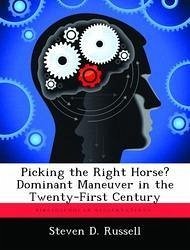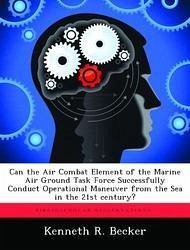Nicht lieferbar

How Can Maneuver Brigades Train and Educate Excellence in the Execution of Twenty-First Century Battle Command at Home Station?
Versandkostenfrei!
Nicht lieferbar
The shift from the industrial age to the information age will continue to impact battle command at the brigade level in 2010 and beyond. This study considers how training can be adapted to keep up with change. Changes brought on by the increasing use of computers in military hardware is analogous to the changes brought on by the shift from linear infantry tactics in World War I to the more mobile and flexible mechanized and armor tactics of World War II. A review of recent observations from the Combined Training Centers (CTC) shows similarity between problems observed in battle command then an...
The shift from the industrial age to the information age will continue to impact battle command at the brigade level in 2010 and beyond. This study considers how training can be adapted to keep up with change. Changes brought on by the increasing use of computers in military hardware is analogous to the changes brought on by the shift from linear infantry tactics in World War I to the more mobile and flexible mechanized and armor tactics of World War II. A review of recent observations from the Combined Training Centers (CTC) shows similarity between problems observed in battle command then and now, as well recurring deficiencies in battle command at the brigade level. How the private sector is transitioning from industrial age thinking and organizational structures to information age solutions provides insights into how the Army can adapt training of brigade battle command into the next century. The study concludes that human factors and the "brainware" of individuals and teams who execute battle command are more important than hardware and software, but are often forgotten or under-resourced. New emphasis and; new technology are needed to bolster brigades as critical thinking, mentally agile, learning organizations. Time and resources must be focused on the brigade to allow more emphasis on training and mental agility and higher order thinking skills of battle command. Development of an information age automated "knowledge warehouse" and networked multifunctional simulations in the unit area could help units increase their experience base and expand the individual "mental maps" that commander and staffs use to navigate the complex problems of battle command. The focused use of history, simulation, professional discussion and mentorship, as well as the increased personal involvement of the commander in battle staff training are ways to reach the goal of upgraded "brainware" and mental agility. This work has been selected by scholars as being culturally important, and is part of the knowledge base of civilization as we know it. This work was reproduced from the original artifact, and remains as true to the original work as possible. Therefore, you will see the original copyright references, library stamps (as most of these works have been housed in our most important libraries around the world), and other notations in the work. This work is in the public domain in the United States of America, and possibly other nations. Within the United States, you may freely copy and distribute this work, as no entity (individual or corporate) has a copyright on the body of the work. As a reproduction of a historical artifact, this work may contain missing or blurred pages, poor pictures, errant marks, etc. Scholars believe, and we concur, that this work is important enough to be preserved, reproduced, and made generally available to the public. We appreciate your support of the preservation process, and thank you for being an important part of keeping this knowledge alive and relevant.










